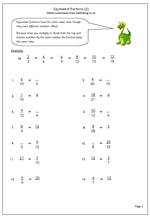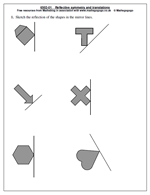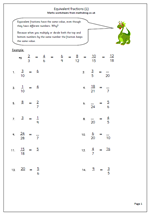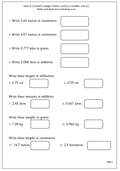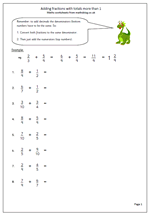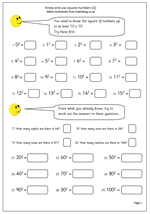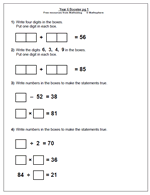Here is another page of equivalent fractions. One part of each pair of fractions is missing and the missing numerator or denominator needs to be entered. Remember, equivalent fractions are fractions which have the same overall value.
One interesting way to check whether two fractions are equivalent is to carry out a couple of multiplications; what is known as cross multiplication. To check whether a/b is equivalent to c/d just multiply a by d and then multiply b by c. If the two answers are equal then the fractions are equivalent. This is a really good way to check to see whether the answers given are correct.
